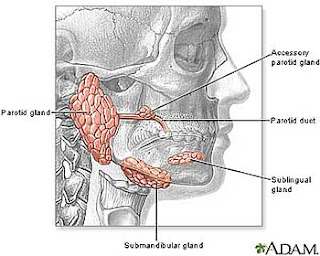How to Diagnose the Mucoepidermoid Tumor and Early Treatment
Mucoepidermoid
tumors (METs) are rare but potentially serious growths that can occur in
various parts of the body, most commonly in the salivary glands. Early
diagnosis and treatment are crucial for better outcomes. A comprehensive
medical history and thorough physical examination are essential initial steps
in diagnosing METs. Symptoms such as a lump or swelling in the affected area,
pain, difficulty swallowing, or changes in voice may prompt further
investigation.
Imaging
techniques like ultrasound, CT scans, or MRI scans can provide detailed images
of the affected area, helping to visualize the tumor's size, location, and
extent of spread.
A biopsy
involves removing a small sample of tissue from the suspected tumor for
examination under a microscope. This definitive diagnostic test confirms the
presence of Mucoepidermoid tumor
cells.
Know About the Treatment Procedure
Surgery is the
primary treatment for Mucoepidermoid tumors. The goal is to remove the tumor
completely while preserving surrounding healthy tissue. In some cases, this may
involve partial or complete removal of the affected salivary gland.
Radiation
therapy may be recommended after surgery to kill any remaining cancer cells or
as a primary treatment for tumors that cannot be surgically removed.
Chemotherapy,
often in combination with radiation therapy, may be used for advanced or
recurrent Mucoepidermoid tumors to shrink the tumor, alleviate symptoms, or
slow down its growth.
In certain
cases, targeted therapy drugs may be prescribed to specifically target and
inhibit the growth of cancer cells, potentially improving treatment outcomes.
Early detection
and prompt treatment are critical for managing Mucoepidermoid tumors
effectively. If you notice any concerning symptoms or have risk factors
predisposing you to these tumors, consult a healthcare professional promptly
for evaluation and appropriate management.




Comments
Post a Comment